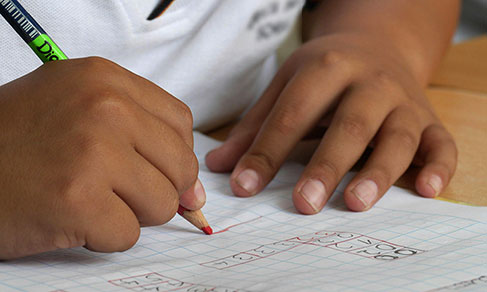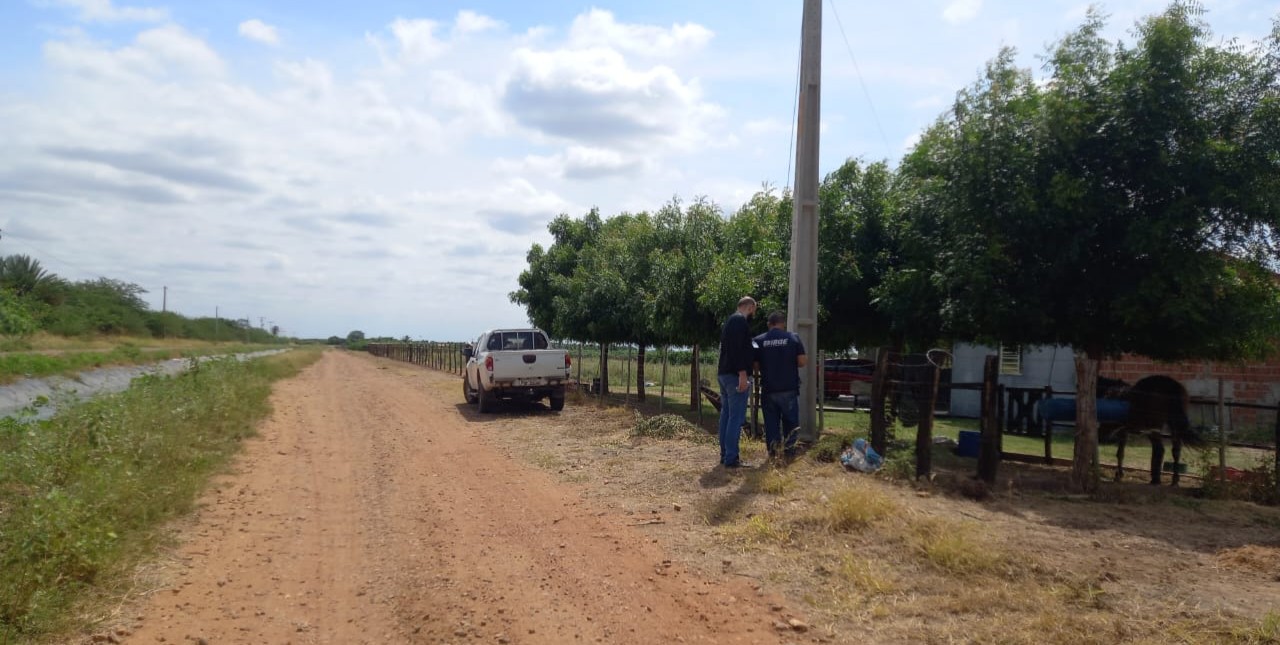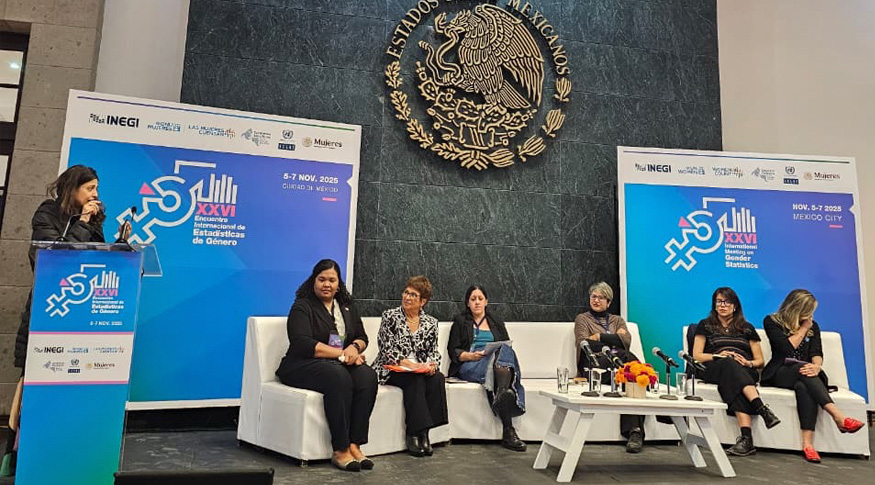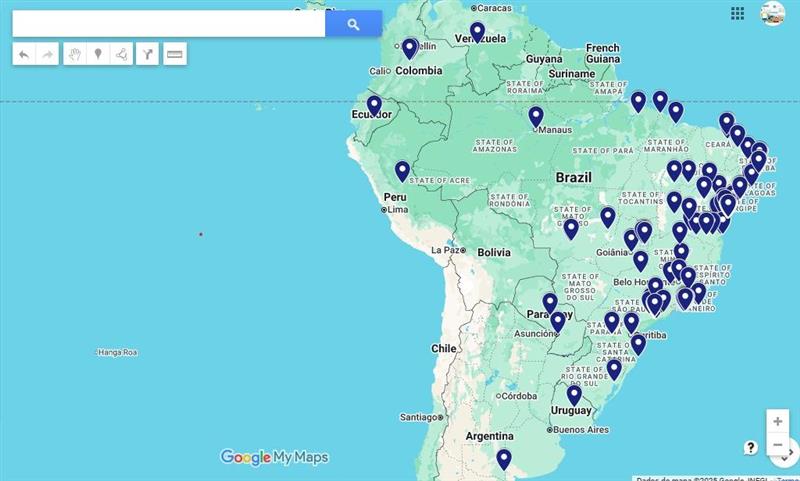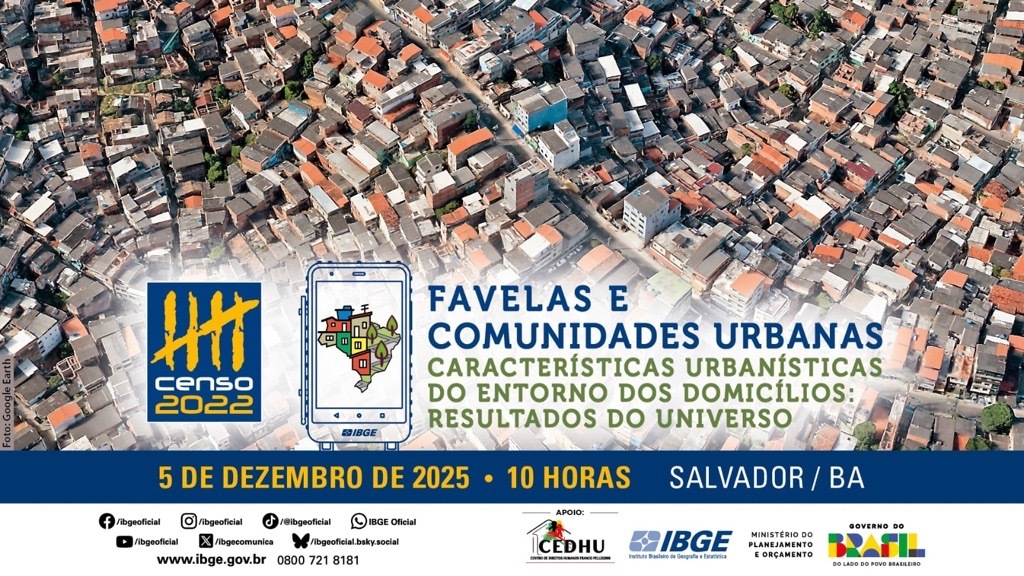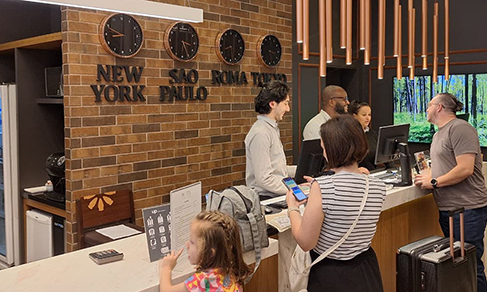2022 Census
In partnership with Unidos da Vila Maria Samba School, IBGE releases literacy results in São Paulo (SP)
May 17, 2024 04h06 PM | Last Updated: May 21, 2024 04h24 PM
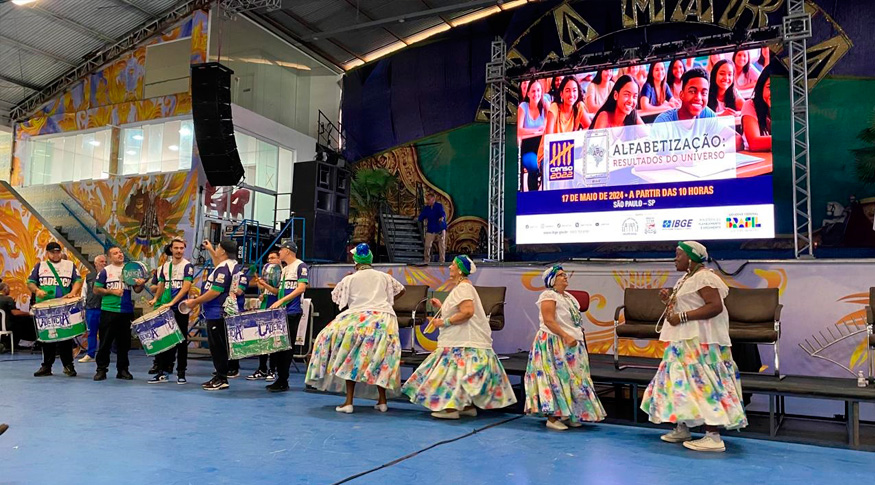
The Brazilian Institute of Geography and Statistics (IBGE) released this Friday, 17th, the results of the “2022 Population Census 2022 - Literacy: Population Results”, on the court of the Unidos de Vila Maria Samba School, located in the Japão neighborhood, in the north area of the city of São Paulo, in an event broadcast live on the channel IBGE Digital and on the Institute's social media.
The release event began with the cultural presentation of the samba school, bringing its drums along with the master of cerimonies, the flag-bearer and the ladies from Bahia. After the cultural moment, the IBGE technical team presented the literacy data from the 2022 Census. The panel included the Director of Surveys, Elizabeth Hypólito, the Deputy Director of Geosciences, Patrícia Vida, the Planning Manager of the Department of Population Census, Giulia Scappini, and the Social Indicators Management analyst, Betina Fresneda.
The president of the IBGE, Marcio Pochmann, praised the work done in the 2022 Popualtion Census and stressed the importance of data. “The information revealed causes national, state and municipal authorities to react. It is possible, based on these results, to create a project that tackles Brazilian illiteracy, and this presupposes a joint effort in the regions. More than 180 thousand enumerators worked in the Census and contributed to bringing these statistics to the population, despite great difficulties. This dissemination reveals what Brazil is and, at the same time, plays the role of a compass, showing where we are going”, explained Mr. Pochmann.

Representing the Secretary of Education of the city of São Paulo, as well as the City Hall of São Paulo, André Machado Sanchez claimed that “without this kind of data, our public policy actions are totally inefficient. With this pieces of information, managers will make the best decisions at municipal, state and national levels.”
Adilson José da Silva, president of Unidos de Vila Maria, highlighted the range of products and surveys developed by the Institute. “Many people have heard of the IBGE, but they don’t know everything the Institute does. I have learned from this visit that they don't just count the population, but they analyze the pre-salt and biomes, from the economy to the Municipal Revenue Sharing Fund, the list is long. People also think that a samba school is just a party, but we provide various services for our community, including education, health and professional training. We are here together with the IBGE and we want to leave this event even closer together. The IBGE is the history of Brazil”, stated Mr. Silva.
The vice-president of the Unidos de Vila Maria samba school, Marcelo Rocha, highlighted the school's role within the region and revealed the Unidos de Vila Maria's theme for 2025 Carnival. “We are representatives of the Brazilian culture, of Carnival. Adding to this, there is the social aspect, so that our community feels embraced here. In 2025, in the next Carnival, we will address the environment, such a sensitive topic that it concerns the world, as we see in the case of Rio Grande do Sul. The IBGE itself brings this topic into its studies and surveys”.
Elizabeth Hipólito explained that “Brazil has a long tradition in investigating this topic. This information has been collected since the first Census, carried out in 1872. Since then, many things have changed, but the interest in the Census has not, as it alone brings data on literacy and also illiteracy within the municipalities, allowing us to analyze these results, to compare specific groups and to understand the differences, so that public managers can think about strategies”.
Patrícia Vida highlighted that “in addition to being important and pertinent to know the illiteracy data in the country, it is also important to know where we are spatially distributed in the country. Therefore, it is essential that we increasingly integrate statistical information with geospatial information. I would like to thank everyone who participated in the Census, without you, it would never be possible.”

Giulia Scappini highlights that “this release presents the first scenario of access to education, a basic social right which is so important to the exercise of many other rights and our citizenship. We would like to thank each of the State Superintendences, public managers and sectors of civil society who helped carry out the Census”.
The superintendent of the IBGE in São Paulo, Francisco Garrido praised the partnership with the samba school and highlighted the role of the IBGE. “I'm happy to return to this samba school and show how well we were received by the team, with very intense social work, helping people in need. Here we see a great social service carried out by Unidos de Vila Maria. We are helping transform data into effective public policies to improve the quality of life in all of the more than 5,000 municipalities in this country,” said Mr. Garrido.
Held in partnership with Unidos de Vila Maria Samba School, the relese event was also attended by state and municipal public authorities and managers.
Technicians present literacy results of the 2022 Population Census
Betina Fresneda commented on the literacy results for the popualtion aged 15 and over, disaggregated by age, sex, color or race, Major Region and also by Municipalities.
The survey recorded a drop in the illiteracy rate in all age groups. In 2022, the youngest group, aged 15 to 19, reached the lowest illiteracy rate (1.5%) and the group aged 65 and over remained with the highest illiteracy rate (20.3%), but it had the highest drop in three decades, going from 38.0% in 2000, to 29.4% in 2010 and 20.3% in 2022. “This behavior reflects, mainly, the educational expansion, which universalized access to elementary education at the beginning of the 1990s, and the demographic transition, which replaced older, less educated generations with younger, more educated ones,” said Ms. Fresneda.

The older population still has the highest illiteracy rate, despite the drop compared to the last Census. “The high rate of illiteracy among the elderly is a reflection of the Brazilian educational debt, whose mais cause was the delay in investment in education, both for the schooling of children and for guaranteeing access to young and adult literacy programs for the saher of popualtion who did not learn how to read and write at the appropriate ages”, explained the analyst.
Ms. Fresneda also presented the cities with the highest and lowest literacy rates, separating them by municipal size classes. For example, among cities with more than 500 thousand inhabitants, Florianópolis has 1.4% illiteracy while Maceió has the highest, 8.4%.
Next, Patrícia Vida presented the Interactive Geographic Platform - PGI, a way of visualizing Census data through interactive maps. This platform was also used to monitor enumerators for the 2022 Census. “It is possible to see, for example, that the literacy rate in the Northeast is lower than in other Major Regions,” said the Deputy Director of Geosciences.


